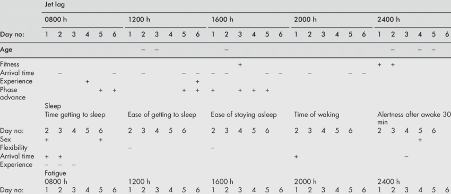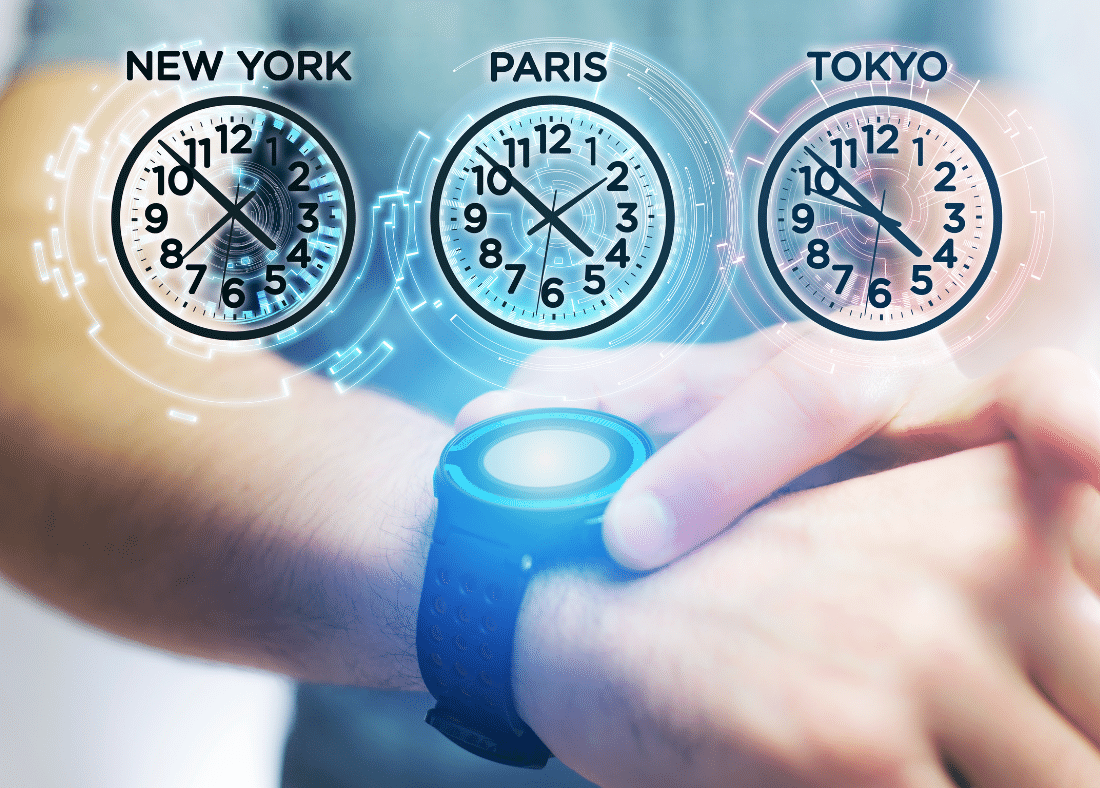How to Beat Jet Lag
Andy MantKnowing how to get over jet lag can be the difference between a great vacation and a terrible one. And this doesn’t just apply to vacation — Temporary sleep disorders such as jet lag can be troublesome, whether at home or abroad.
Figuring out how to prevent jet lag is extremely difficult but steps can be taken to mitigate its impact. Side effects of jet lag include feeling tired, temporary sleep problems and trouble falling asleep. So what helps with jet lag? Let’s explore some essential tips for speedy jet lag recovery below.
What is Jet Jag?
Jet lag is a temporary circadian issue linked to our internal clock system.
When one travels, usually by air, across multiple time zones our circadian rhythms become desynchronised. This is because the light and dark cycles are different at our destination compared to our departure location.
There are only certain times you’ll experience jet lag. Flights that enter a new time zone (or cross multiple) are the ones that mess with your internal clock, and it’s only an issue when travelling from east to west or from west to east. Jet lag does not occur when travelling from North to South or when there are no time zone changes.
Travelling East – The King of Jet Lag!
For those of us who travel frequently have found that travelling just a few hours to the East is more detrimental than travelling to the west.
Why is direction of travel so influential in intensifying symptoms of jet lag?
Simply put, our master clock is easier to delay than it is to advance.
Travelling eastwards on a plane regresses our circadian clocks, whereas travelling Westward advances them. So for example, if you go on a business trip to visit Perth from Sydney, you’ll likely experience more severe jet lag after returning home to Sydney.
Humans operate a 24-hour circadian clock which ties in with the spin of the earth. Removing to this clock cycle is what happens when you travel east, but when you travel west you add time on this clock mechanism. This makes it harder for the body’s sleeping schedule to adjust to normal.
You can begin to see that compounding time to a 24-hour cycle is going to be more detrimental to jet lag than shortening it.
When figuring out how to fix jet lag, it’s important to understand that our body clocks have a tendency to run slightly longer than 24 hours. So when we travel West and gain a few hours, the body has a better time adjusting.
The Ultimate Jet Lag Formula for Eastward Travel
In 2007 an important academic paper was released by Waterhouse et al. to discuss insights into how to beat jet lag more effectively. This research sought to analyse eastward aviation travel across a number of time zones.
The table below shows the times needed to manage light exposure when travelling eastwards to avoid jet lag.

Want to learn how to beat jet lag when travelling East? One of the best ways for getting over jet lag quickly is to arrive at your destination in the evening.
You will most likely be exhausted from flying and if you arrive at your destination in the evening you can just go straight to bed and fall asleep, helping regulate your circadian rhythm faster.
When you travel east, you should synchronise your timepiece to the destination time zone.
For example, when it's daytime in your destination’s time zone, make sure you are wearing yellow lens blue light glasses and when it's post sunset in your destination wear blue light blocking glasses.
When it is time to sleep in the destination, take off your blue light blocking glasses and pop on a good quality black out sleep mask and try to get as much sleep as possible by going to bed early.

Before your scheduled flight it is also wise to move your bedtime about a week before you travel east by 30 minutes earlier each night. This can be done through appropriate light management. Morning sunrises coupled with getting your red lens blue light blocking glasses on 30 minutes earlier each night so you start producing melatonin earlier is a great initiative. This study supports the use of blue light glasses for beating jet lag.
A summary of how to beat jet lag when travelling west to east:
- When booking your flight make sure you book one that lands at around bedtime in the destination country
- Get intense bright light from natural light sources (the sun)
- Earlier bedtime by 30 minutes each night about a week before you travel to synchronise yourself to destination local time
- When travelling set your watch to the destination time zone and manage your light environment using blue light blocking glasses
- When you land go straight to bed (stay awake when needed to achieve a suitable bedtime)
- Use Waterhouse’s chart for light exposure for the first day at your destination then revert to morning sunrises to entrain your master clock
The Ultimate Jet Lag Formula for Westward Travel
As we have discussed, westward travel doesn’t have the same impact on our circadian clocks, but some of us will still feel tired or suffer from a few days of fatigue.
Make sure you expose yourself to evening light, ideally from the sunset but you may also want to start putting your blue blockers on later as well in the evening and exposing yourself to artificial blue and green light a little at the start of the evening.
Set your watch as soon as you arrive on the flight to the destination time zone and use yellow lens blue light glasses during the daytime and your blue light blocking glasses (red lenses) at the destination's night time. This can be hard to achieve but well worth it for jet lag management.

Alternative Ways to beat Jet Lag
Whether you’re looking into how to overcome jet lag once home or finding it hard to enjoy your long-awaited vacation, use the following to mitigate the impact of flying:
- Avoid alcohol, drink plenty of water to avoid dehydration and stay hydrated.
- Wear an air filtration mask to assist with air quality onboard
- Ground your bare feet to a metal component on the airplane.
- Avoid the processed foods on board.
- Ground to the earth barefoot as soon as you land
- Wear earplugs to reduce noise induced hearing damage, these can also be an excellent sleep aid.
- Take a cold shower, swim or bath when you land
- Eat seafood before you leave to boost DHA stores
- Get up and walk as much as you can during the flight
- Get a massage when you arrive
Scientific References
- https://pubmed.ncbi.nlm.nih.gov/17398311/
- https://www.ncbi.nlm.nih.gov/pubmed/17572456/
- https://www.ncbi.nlm.nih.gov/pubmed/19083655/
- https://bjsm.bmj.com/content/36/1/54




